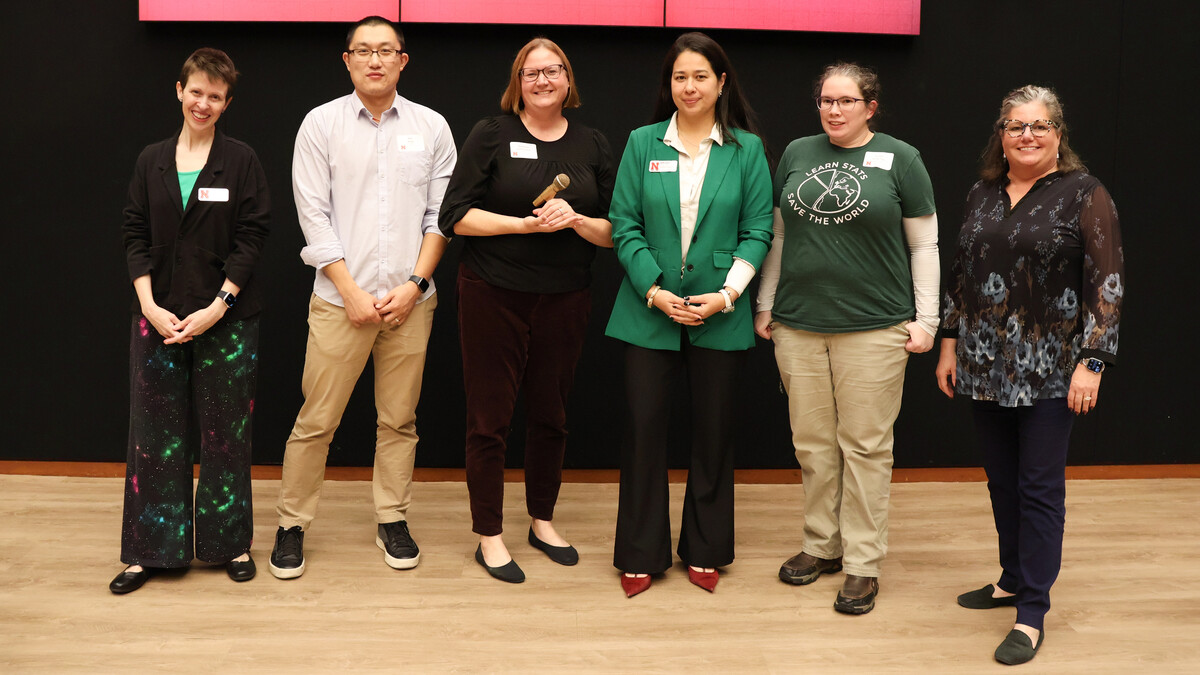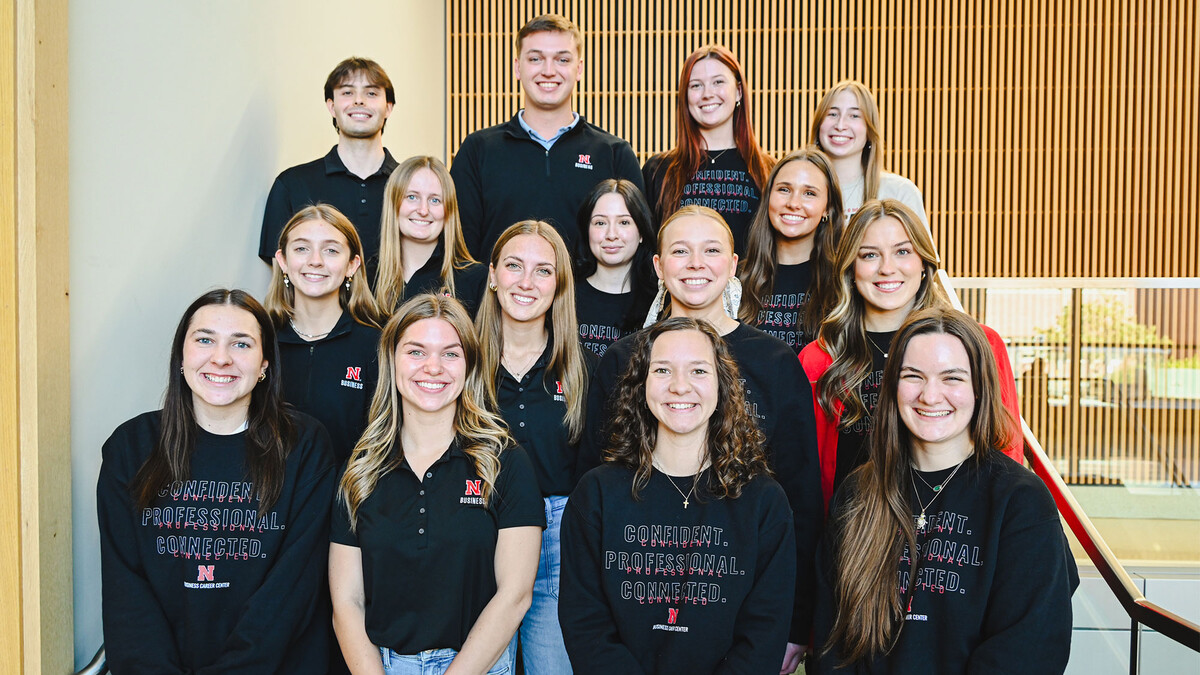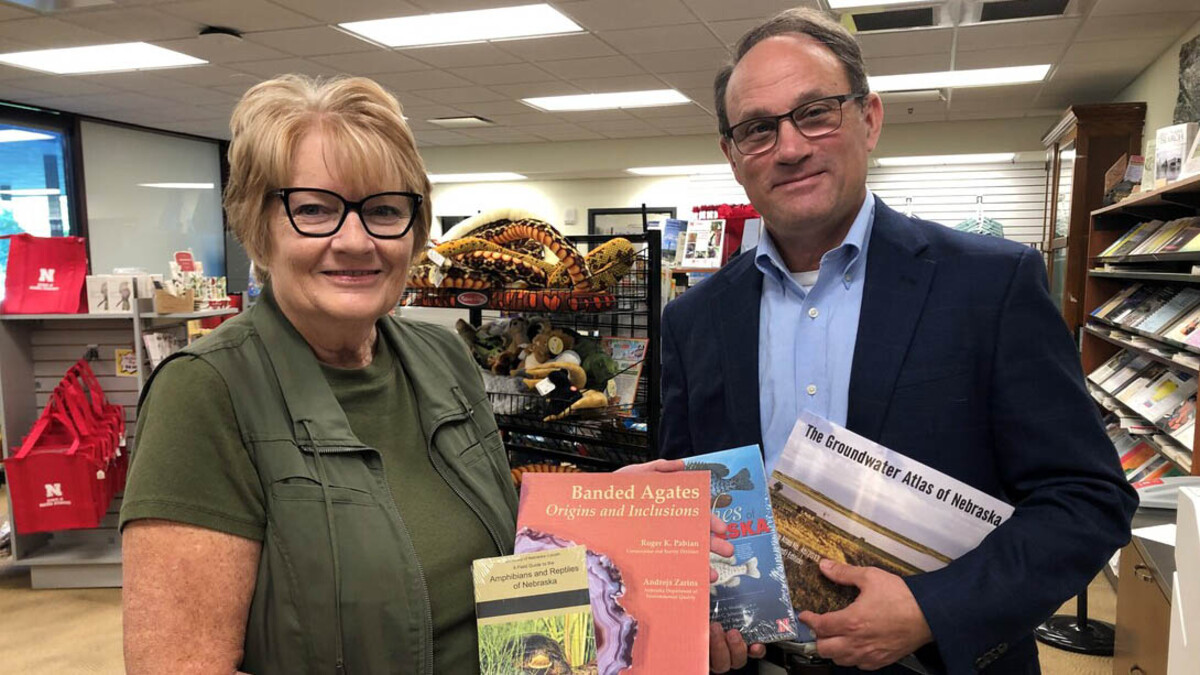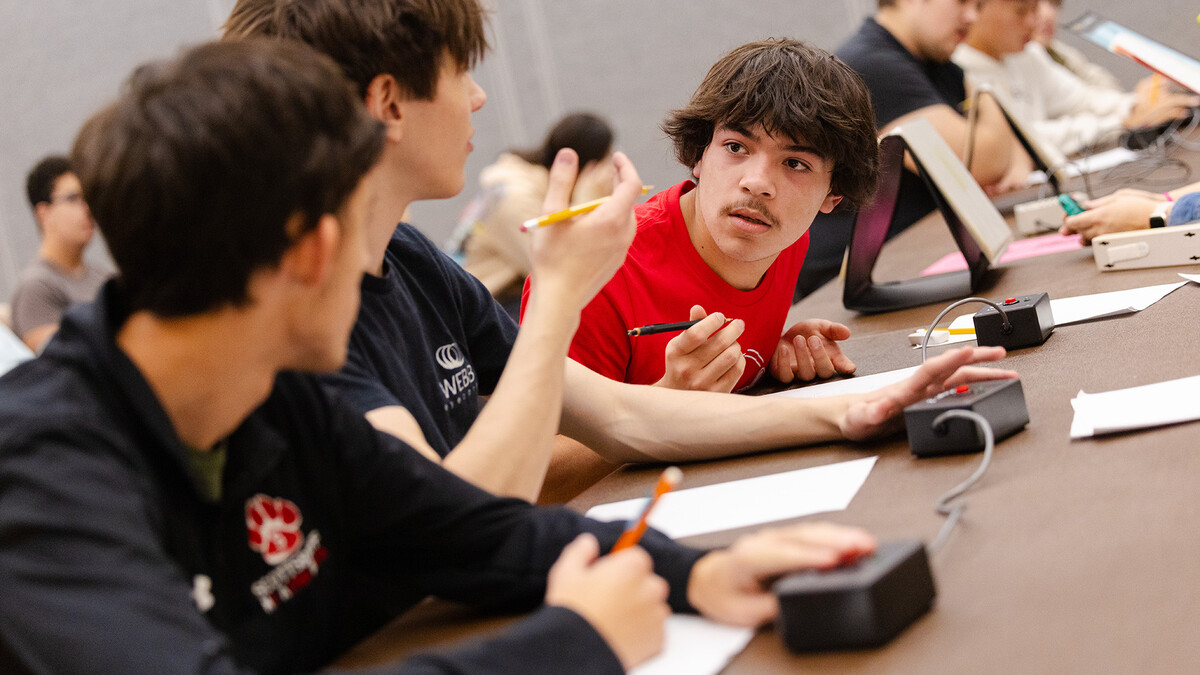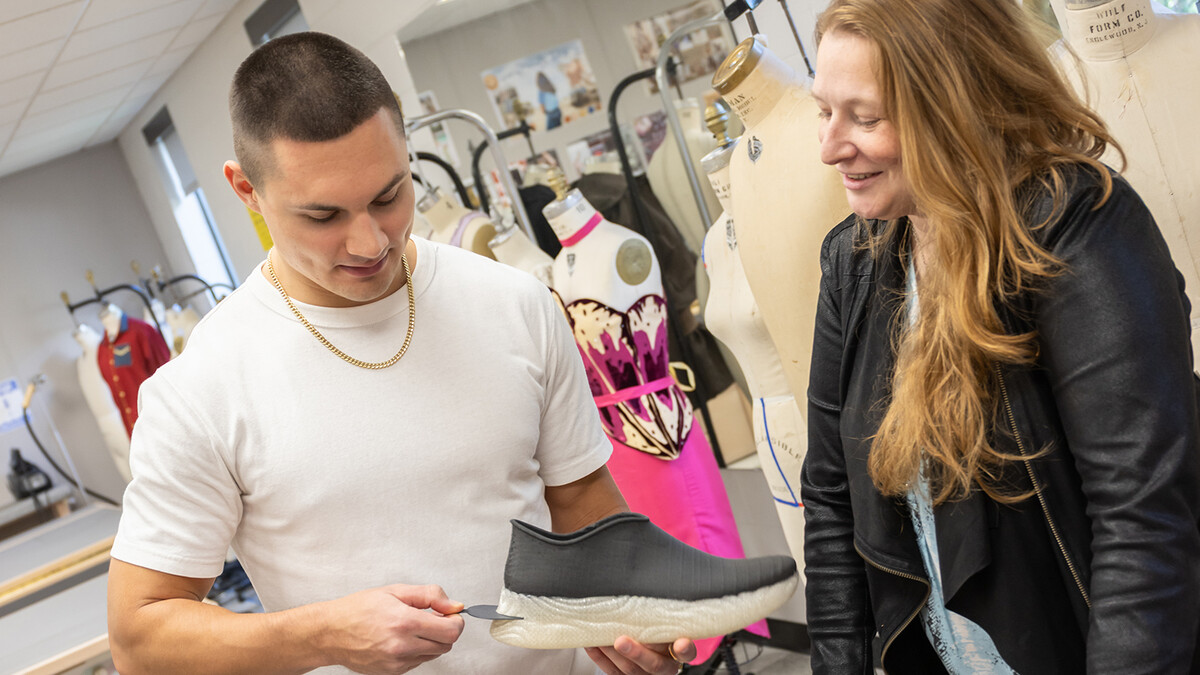
Kristen Labadie | University Communication and Marketing
Kristen Labadie | University Communication and Marketing
Byron D. Chaves, associate professor of food science and technology at the University of Nebraska–Lincoln, was consulted for national news stories on two very different topics in April. The stories were among 40-plus featuring Husker faculty, staff, students, centers and programs during the month.
- Chaves was interviewed for an April 15 Kansas Public Radio story on Europeans disparaging U.S. poultry as “chlorinated chicken” due to the use of chlorine in American poultry processing plants. He said European standards aren’t necessarily more stringent or safer. “I would be very cautious about pushing that narrative,” he said. The story was picked up by dozens of NPR affiliates.
- Chaves was also quoted in an April 22 Newsweek article on Gerber Products Company reissuing a nationwide recall of its Soothe n Chew Teething Stick because of a potential choking hazard. “The U.S. Food and Drug Administration and the U.S. Department of Agriculture consider material between 7 and 25 mm in length as a potential hazard,” he said. “Hardness and sharpness are considered in assessing the risk, not just the size. These objects are particularly problematic for infants as they lack motor control to chew and swallow properly and they can’t verbalize discomfort or distress effectively.”
Additional national news coverage in April included:
- Wes Peterson, agricultural economics, was interviewed for an April 1 NPR story on how protectionist trade policies by the United States have led to unintended consequences in the past. He discussed steps the U.S. government has taken to support the home-grown sugar industry, dating back to the Cuban Revolution of the 1950s, and the impact on consumers and companies. The story was picked up by dozens of NPR affiliates.
- Adam Houston, Earth and atmospheric sciences, was interviewed for an April 3 segment on CNN about severe weather in the southeast United States. He said it was “pretty unprecedented” for a region to see multiple days of severe weather in a row. Climate change isn’t necessarily leading to more severe storms, he said, but to more variability in the weather.
- Multiple outlets published stories on the 2024 Nebraska Statewide Groundwater-Level Report, produced by the Conservation and Survey Division in the School of Natural Resources. The report showed that groundwater levels in the eastern half of the state continued to decline following several years of drought. Stories on the report appeared in KOLN/KGIN, the Lincoln Journal Star, Nebraska Public Media, Omaha World-Herald, Brownfield Ag News and The Fence Post.
- The 225 Husker undergraduate students who have officially been admitted to teacher education programs in the College of Education and Human Sciences during the 2024-25 academic year were recognized at the second annual Teacher Education Convocation April 4 at Carolyn Pope Edwards Hall. The Columbus Telegram, Fremont Tribune, Grand Island Independent, Lexington Clipper-Herald, Norfolk Daily News, Vermillion (South Dakota) Plain Talk and Yankton (South Dakota) Daily Press and Dakotan ran articles on the future teachers from their areas.
- The university’s April 29 Heuermann Lecture focused on the theme “Nourishing a Healthy Future: The Role of Irrigation in a Changing World.” The Fence Post and High Plains Journal ran articles on the lecture, which was part of the 2025 Water for Food Global Conference and sponsored by the university’s Institute of Agriculture and Natural Resources.
- The University of Nebraska–Lincoln is joining a new $27.4 million global initiative to reduce methane emissions from livestock by harnessing natural variation in how animals digest food. Backed by the Bezos Earth Fund and the Global Methane Hub, the effort will support research and breeding programs to identify and scale climate-efficient livestock across North America, South America, Europe, Africa and Oceania. Stories on the initiative appeared in KFXL, Beef magazine, Feedstuffs, The Fence Post and Harvest Public Media.
- An international team of agronomists is calling for a new approach to estimate crop yield potential and gaps — information that is critical in planning how to meet growing food demand, The Fence Post reported April 14. Husker researchers — including Patricio Grassini, agronomy and horticulture, and Antoine Couëdel, a former postdoctoral researcher in agronomy and horticulture — made major contributions to the study, published online April 8 in the journal Nature Food.
- The university’s Elite 11 Veterinarian Program was highlighted in an April 16 National Hog Farmer article on another new program, the Nebraska Rural Veterinary Grant Program, announced by Gov. Jim Pillen on April 14. Tiffany Heng-Moss, dean of the College of Agricultural Sciences and Natural Resources, was featured in the article. Similar stories appeared in KETV, KLKN, KOLN/KGIN, the Lincoln Journal Star and Rural Radio Network.
- Twenty students from across Nebraska were recently selected for the second cohort of the Elite 11 program, Beef magazine and the Yankton (South Dakota) Daily Press and Dakotan reported.
- Margaret Jacobs, history, director of the Center for Great Plains Studies, was interviewed for an April 16 Washington Post article on the National Endowment for the Humanities recently terminating about $1.5 million in grants to research Indian boarding schools. Jacobs and her team were just two months shy of finishing a four-year project to digitize about 10,000 pages of records from the Genoa Indian Industrial School in Nebraska when their $450,000 grant was pulled. Jacobs said the termination was “incredibly disappointing.” (This article requires a subscription.)
- Project RAICES — a collaborative project between the University of Nebraska–Lincoln and Kansas State University aimed at boosting the teacher workforce in Nebraska and Kansas — was featured in an April 16 NPR story. The project lost its federal funding in February. Ted Hamann, teaching, learning and teacher education, project co-leader, and Ali Waly, a freshman secondary education major who lost his scholarship, were interviewed for the story.
- Faculty leaders at the University of Nebraska–Lincoln have joined other institutions in calling for an alliance to protect higher education against what they describe as attacks from the Trump administration on academic freedom and the research enterprise. Stories on the alliance have appeared in KLKN, the Lincoln Journal Star, The Chronicle of Higher Education and The Guardian.
- The university’s High Plains Regional Climate Center shut down April 17 as part of the White House’s push to eliminate federally funded climate research, the Lincoln Journal Star reported. Derek McLean, dean of the Agricultural Research Division, and Ken Dewey, professor emeritus of applied climatology, were interviewed for the article. Similar stories appeared in Nebraska Public Media, Rural Radio Network, KCUR and Texas Public Radio. The center reopened about 36 hours later.
- The university’s Center for Entrepreneurship recognized nine people for their outstanding contributions to the Nebraska entrepreneurial community at the 2025 Entrepreneur Awards, April 15 at the Rococo Theatre. Silicon Prairie News published an April 17 article on the awards.
- Sixty-four student teams recently competed for $82,500 in prizes during the 38th annual New Venture Competition, hosted by the university’s Center for Entrepreneurship. The Columbus Telegram and Silicon Prairie News published articles on the winners.
- Dave Boxler, an entomologist with Nebraska Extension, was interviewed for an April 22 RFD-TV story on how insects affect livestock. He discussed the university’s work on biopesticides — especially those that are plant-based.
- The University of Nebraska–Lincoln was featured in Variety magazine’s Education Impact Report of colleges and universities making major contributions to the entertainment industry. Hank Stratton, director of the Johnny Carson School of Theatre and Film, was interviewed.
- Silicon Prairie News published an April 24 article on Edgeworks, a research and digital production program in the Johnny Carson Center for Emerging Media Arts. Megan Elliott, founding director of the Carson Center; Ash Eliza Smith, emerging media arts, co-principal investigator for Edgeworks; and Ryan Schmaltz, a productization adviser for Edgeworks, were interviewed for the story.
- Mitch Stevenson, associate director of the Panhandle Research, Extension and Education Center in Scottsbluff, was interviewed for an April 25 High Plains Journal article on virtual fencing systems, which he has researched. “(Virtual fencing) works very well in influencing the timing, the frequency and the intensity of grazing,” he said. “You can be really flexible and use a lot of creativity.”
- Yiqi Yang, textiles, merchandising and fashion design, and biological systems engineering, and colleagues have developed a first-of-its kind technology for fiber-to-fiber, or chemical, recycling of textiles that successfully removes dyes, separates natural and synthetic blends and creates high-quality fibers. Ecotextile News and Knowridge have published articles on the innovation.
Faculty, administration, student and staff appearances in the national media are logged at http://newsroom.unl.edu/inthenews. If you have additions to the list, contact Sean Hagewood at shagewood2@unl.edu or 402-472-8514. If you have suggestions for national news stories, contact Leslie Reed at lreed5@unl.edu or 402-472-2059.
